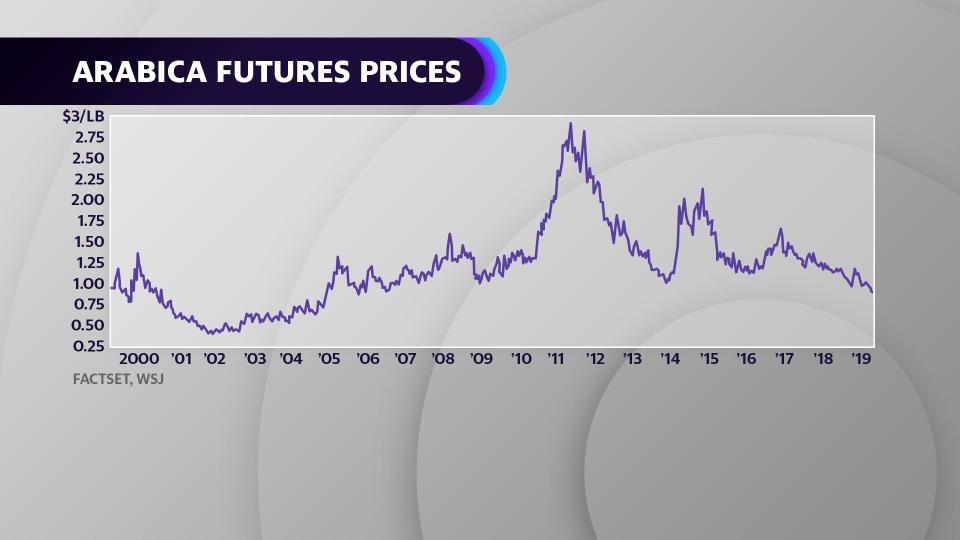Why the price of coffee is rising, despite falling bean prices
The cost for your morning cup of joe is rising, despite plunging prices for wholesale coffee beans. According to market research firm NPD group, customers are paying more for caffeine at fancy coffee shops — shelling out an average of $4.24 for a cup, rising 8 cents from last year. A visit to a typical cafe will set patrons back roughly $2.99, an increase of 8 cents from 2018.
Additional production costs like roasting, grinding, packaging, and labor are contributing to the price hike at the coffee bar, even though arabica futures are falling to their lowest prices in over a decade. This is coming as demand for coffee remains high; 63% of U.S. adults claim to drink coffee every day, down slightly from 64% in 2018, according to the The National Coffee Association’s latest survey.

Change is already brewing in the coffee industry, with Starbucks raising the price of a small drip coffee by 10 to 20 cents in most locations last year. It now costs around $1.95 to $2.15 for a “tall” Pike Place roast, depending on where you are. At the time, the caffeine giant cited normal inflation as the reason for the increase. Other big businesses are clamoring to release new products into the coffee market too. Coca-Cola is gearing up to launch coffee-infused soda to 25 markets this year.

But coffee farmers are pushing back. Bloomberg reports Brazilian farmers are no longer selling their beans, hoping for a price recovery. Brazil is responsible for nearly 30% of the world’s production of coffee, making it the world’s top supplier, according to the USDA Foreign Agricultural Service.

 Yahoo Finance
Yahoo Finance 